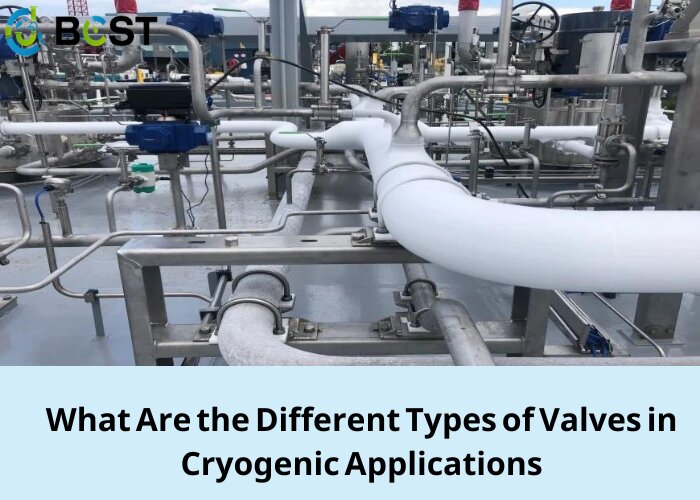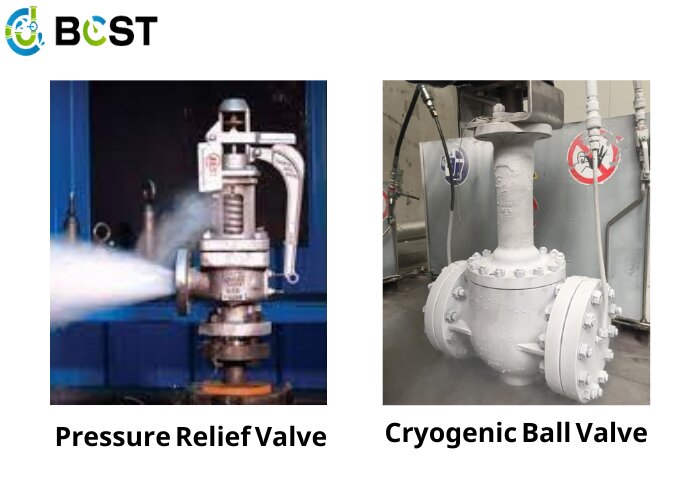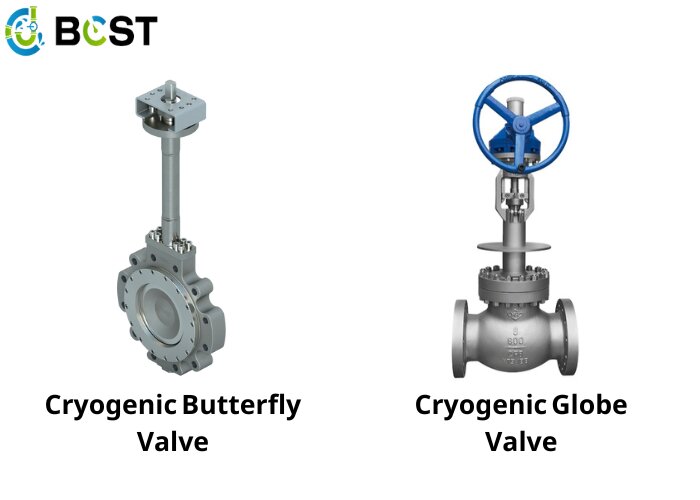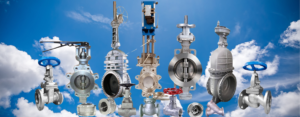
What Are Cryogenic Valves?
Cryogenic valves are one-of-a-kind valves that perform admirably in severe temperatures. These valves must be composed of materials that can withstand the extremely low temperatures associated with cryogenic materials and fluids, which are handled at temperatures below -101°C.
Low-temperature valves can withstand temperatures ranging from 37°F to -320°F. Each valve has a different temperature range. Cryogenic valves frequently feature lengthy stems. The valve stem seal may be able to prevent contact with the cold fluid. The cryogenic valve offers superior bubble-tight cutoff features to prevent leaking at all costs. Since the fluids these valves and pipes carry are chemicals, a leak could be catastrophic
How Do Cryogenic Valves Work?
Cryogenic valves are kept naturally closed to protect and retain cryogenic gases or other mediums. When subjected to high pressure, a cryogenic valve opens, allowing gas or other media to pass through readily. The open flow will continue until the pressure drops again, at which point it will swing back and seal with a unique metal seat bubble-tight shutdown to prevent any leaks.
The external pressure effects on how well a cryogenic valve works. A cryogenic valve is normally kept closed. As a result, the media inside the valve will remain contained and will not leak into the surrounding environment. These valves are designed to respond accurately to pressure increases. By increasing pressure, the valve is pushed into the open position, allowing the medium to flow. This flow will continue until the pressure decreases.
Types of Cryogenic Valves
Pressure Relief Valve
In pneumatic pipelines or vessels, a safety component known as a pressure relief valve is used. Relief valves manage compressed air pressure levels in systems so that they do not exceed a preset limit and endanger persons or equipment. As a result, these valves are used to avoid over-pressurization, which occurs when air pressure exceeds what is allowed for that system.
Relief valves allow excess pressure to be released, preventing compressed air systems from becoming over pressurized. When pressure is applied to the valve seat, a force opposing the spring tension opens the valve. The control knob can be used to adjust the tension of the spring, which affects the pressure required to open the valve.
Pressure relief valves are required for over pressure protection in the LNG industry. When operating in cryogenic conditions, however, not all pressure relief valves are made equal, with design temperatures as low as -320 F. Pressure relief valves must have better sealing qualities to withstand freezing temperatures and fulfill their safety function in cryogenic applications.
By rotating a ball with a bore inside the valve, industrial ball valves stop the passage of liquids, gasses, and vapors through a pipe system. A shaft that connects the ball to the operational and controlling system rotates the ball, which is positioned between two seats. When the bore’s cross-section is perpendicular to the flow zone, fluid cannot enter through the valve. How much fluid flows through the valve and how quickly it does so is determined by the number of holes exposed to the floor.
Cryogenic ball valves provide quick and secure shut-off, preventing leakage while working with cryogenic fluids. There are two types of ball valves for cryogenic fluid service based on the seat design. Cryogenic ball valves have longer stems and bonnets than standard ball valves. The cryogenic fluid channel is located above the stem packing in this configuration. The expanded stem forms an insulating column.
By increasing pressure on the column, the cold liquid transforms into a warm vapor. After that, the vapor forms a gas gap below the seals, shielding the valve from harm brought on by localized freezing. The insulating column protects the service fluid from air heat that would otherwise destabilize the cryogen’s physical characteristics. The market has various ball valves, like double block and bleed ball valves.

A cryogenic gate valve, also known as a cryogenic control valve, allows or restricts media flow. Cryogenic gate valves use a flat gate to stop the flow between pipe flanges. A gate valve and the installation pipe have the same diameter due to the entire port design. When fully open, gate valves, unlike butterfly valves, minimize fluid pressure losses. Furthermore, due to the identical widths and valve widths, gate valves allow pigs to go within the pipe to undertake cleaning and inspection activities.
A cryogenic gate valve is primarily utilized in gas liquefaction systems and operates successfully at temperatures below -40oC under specific service conditions. Their extended bonnets may appear unusual at first glance, but they keep the stem package far enough away to continue working despite the extremely low temperatures in the flow. However, this one-of-a-kind design lowers heat transmission from the valve’s outside to its interior, resulting in energy savings and more effective systems.
The circular disk at the core of the cryogenic butterfly valve provides it with a shorter length than the other types of cryogenic valves discussed above. They provide a useful purpose when immediate opening and closing operations are required. Furthermore, these are easier to use, lighter, and less expensive.
Because cryogenic gases are so sensitive, an undetected leak could pose serious risks and cause substantial damage. Because standard valves contract and expand at varying rates, they can develop seal cracks when exposed to excessively hot or cold conditions. For the best valves, buy from a reputed butterfly valve provider.
Linear motion closing-down valves, also known as globe valves, can start, halt, or regulate flow by utilizing a disc closure mechanism. All organizations have the option of completely removing the globe valve disk or completely shutting the flow stream. The seat opening adapts according to the movement of the disc, making it ideal for flow control activities. Globe valves are commonly used and useful for throttling and controlling fluid flow. They are most effective with tiny piping.
Globe valves can perform most tasks required by piping systems for fluid handling processes. Even though versatile as a block or isolation valve, the globe valve’s primary function is to control flow in the partially open position, as opposed to gate valves, which can be utilized in either the wholly or fully closed positions. A cryogenic globe valve provides long-term performance and durability. These valves also enable long-lasting sealing.

Standards of Cryogenic Valve
Although some companies have their own specifications for cryogenic valve service, the majority of them are based on technical standards such as ASME 16.34, BS 6364, and ISO 21011.
ASME 16.34: ASME 16.34 includes critical criteria for valve-related components such as threading, flanges, and welding ends. Among the specifics are:
- Valve closure checks, leakage detection devices, and valve shell tests are all required.
- A description of the pipe marking criteria as well as the nominal pipe size.
- Specifications for flange removal, electrical continuity, and material selection.
BS 6364: This British Standard specifies the design, manufacturing, and testing requirements for cryogenic valves. The following are its prerequisites:
- Cryogenic valves must have larger bonnets and glands. The length of the extension must also be sufficient to keep the stem packing at the proper temperature. As a result, it can work within the normal temperature range of the packing material.
- According to BS 6364, flat-seated discs are not permissible for globe valves. Instead, they should be tapered or conical.
- BS 6364 also includes procedures for valve manufacture and prototype testing.
- The Cryogenic valve designs for combustible service must provide electrical continuity to avoid static buildup.
- Liquid service valves must be able to operate with their stem at least 45 degrees above horizontal. Similarly, gas service valves must be able to open and close with their stems.
ISO 21011: This international standard specifies the design, manufacturing, and testing requirements for valves used in the operation of cryogenic fluids. The specifications cover operating at cryogenic and ambient temperatures. The following are its primary recommendations:
- This standard requires valve parts made of metallic and nonmetallic materials to comply with ISO 21028-1 and ISO 21028-2 standards.
- To perform their intended function, cryogenic valves must work securely between their rated lowest temperature and 65°C. Furthermore, they must work within a specified pressure range.
- Cavities that could lead to pressure buildup and liquid entrapment are forbidden by ISO 21011.
Cryogenic Valve Applications
Industrial facilities are the central locations of cryogenic valves, which take advantage of procedures that can be carried out at extremely low temperatures. Therefore, several of these cryogenic valve applications are highlighted below.
Oil and Gas Industry: Cryogenic valves manage the oil and gas industry’s liquified gases like methane, liquid nitrogen, and helium. These substances cool to cryogenic temperatures and are kept in a fluid condition thanks to their simplicity and safe, non-pressurized storage and transportation. More significant volumes can thus be transferred or stored for an extended length of time while the pipe system maintains power generation at significantly lower pressure levels. Condensate, moisture, and CO2 must be eliminated before these gasses are cooled into a liquid to avoid corrosion difficulties later on.
Petrochemical and Chemical Industries: Several products in the chemical processing sector, such as liquid oxygen, ethylene, and liquid nitrogen, require handling at extremely low temperatures. Cryogenic valves are the best choice for this application. They’re also great for transporting liquids like LPG.
Air Separation: To separate the various gases in the air, several pressure techniques are used. Cryogenic valves are used extensively in these facilities.
Food and Beverage Manufacturing: Cryogenic valves are commonly employed in factories that manufacture processed foods and beverages. These items are transferred into and out of freezers using cryogenic pipes and valves.
Health Care Industry: Cryogenic valve applications are expanding and are even being employed in the medical sector—both in storage chambers for medical equipment and in pipelines that transport gasses like oxygen.






